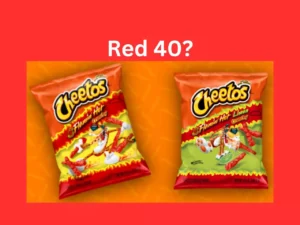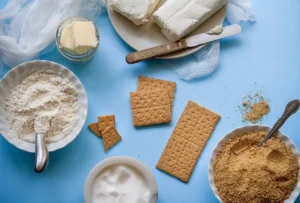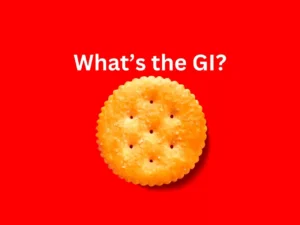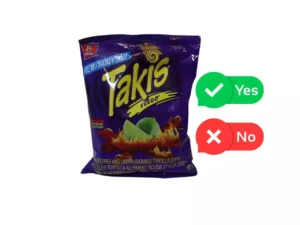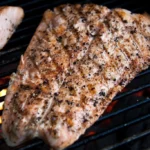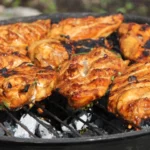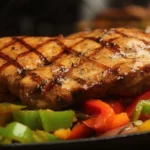Do you wish drinking bubble tea? Those chewy boba balls are alluring!
But you suspect milk is added to bubble tea, so you want to know if it has milk. Or if you can have some milk-free options for your lactose intolerance, vegan lifestyle or dairy allergy is stopping you from trying bubble tea?
The good news is you can enjoy bubble tea whenever you want! How? Read this article to know!
A Quick Answer to “ Is Bubble Tea Dairy-Free?”
The original Thai version of bubble tea usually has dairy products added to milk tea, like condensed milk or creamer, to give it a creamy texture. But bubble tea recipes can differ, and some traditional ones might use non-dairy options or have dairy-free choices available if you ask for them.
Many cafes and tea shops have almond, coconut, or soy milk as non-dairy alternatives, so you can still enjoy a creamy and tasty dairy-free bubble tea. Just check with the store or menu to see if they have dairy-free options. So, yes, you can definitely have dairy-free bubble tea if you pick the right ingredients!
What is Traditional Bubble Tea?
Bubble tea, or boba tea, is a super cool drink originally from Taiwan and was created in the 1980s in a place called Tainan. It’s made with a combo of tea, milk, yummy tapioca pearls, and a bit of sugar to sweeten things up. Usually, the tea used is black, but sometimes green or oolong tea can be used too.
When you order traditional bubble tea, it usually comes in a big plastic cup with a special wide straw that’s perfect for slurping up those tasty tapioca pearls. It’s a fun and delicious way to enjoy your tea!
What is in Bubble Tea?
Here is a breakdown of bubble tea ingredients: dairy and non-dairy. Understanding them will help you order or make dairy-free bubble tea for you.
| Ingredient | Dairy-Free? |
| Milk | No |
| Soy milk | Yes |
| Almond milk | Yes |
| Coconut milk | Yes |
| Tea | Yes |
| Sugar | Yes |
| Honey | Yes |
| Tapioca pearls | Yes |
| Fruit | Yes |
| Whipped cream | No |
| Boba | Yes |
Traditional bubble tea typically includes the following ingredients:
- The black tea base or green tea is the main ingredient of traditional Thai bubble tea. These are purely non-dairy ingredients.
- Milk or creamer is essential to traditional bubble tea to make it creamy. Condensed milk or non-dairy creamer may be used. These are the ingredients that make your bubble tea dairy and non-vegan.
- Sugar is commonly added to sweeten the tea base. The amount of sugar can vary depending on personal preference.
- Tapioca Pearls are the signature element of bubble tea. These are small, chewy balls made from tapioca starch. They are cooked until soft and added to the drink’s bottom.
These are the essential ingredients in traditional bubble tea. However, since bubble tea has evolved over time, numerous variations and flavors are now available. Some shops may offer different tea bases, alternative sweeteners, flavored syrups, or additional toppings like jelly cubes, fruit bits, or pudding.
What are the Dairy-Based Variations of Bubble Tea?

Dairy-based bubble tea variations typically include milk or creamer to give the drink a creamy and rich texture. Here are a few examples:
- Milk Tea is the most common way to add dairy to bubble tea. Mix a tea base like black or green tea with milk or creamer to create a creamy and smooth taste.
- Honey milk tea is for you if you’re craving something sweet and creamy. It’s made with black tea, milk, and honey for that extra sweetness.
- Thai Milk Tea is popular with its strong black tea base and sweetened condensed milk, giving it that irresistible Thai flavor.
- Hokkaido Milk Tea, originating from Hokkaido, Japan, combines a black tea base with Hokkaido milk for a unique and delicious twist.
- And there’s Matcha Latte for all the matcha lovers. It’s made by whisking finely ground green tea powder with milk or creamer to create a creamy and frothy matcha latte.
So, whether you’re into the sweetness of honey milk tea, the boldness of Thai Milk Tea, the creaminess of Hokkaido Milk Tea, or the matcha goodness of Matcha Latte, there’s a dairy-based bubble tea variation to satisfy your taste buds!
Getting Started with Dairy-Free Options in Boba Tea
Here is how you can go dairy-free with your bubble tea without sacrificing your cravings.
Non-dairy milk, Vegan-Friendly Alternatives Used in Bubble Tea
Non-dairy milk alternatives used in bubble tea provide a lactose-free and vegan-friendly option for those who prefer to avoid dairy. Here are some common non-dairy milk alternatives that can be used in bubble tea:
1. Almond Milk
Made from ground almonds and water, almond milk has a slightly nutty flavor and creamy consistency that works well in bubble tea.
2. Almond Milk
Coconut milk is extracted from the flesh of coconuts and has a rich and tropical taste. It adds a creamy and indulgent texture to bubble tea.
3. Soy Milk
Soy milk is made from soybeans and has a smooth and slightly sweet taste. It’s a popular non-dairy alternative and can be used in bubble tea.
4. Oat Milk
Oat milk is made from oats soaked in water and has a creamy texture and mild flavor. It’s becoming increasingly popular as a non-dairy option for bubble tea.
5. Rice Milk
Rice milk is made from milled rice and water. It has a naturally sweet taste and a thinner consistency compared to other non-dairy milk alternatives.
6. Hemp Milk
Hemp milk is made from hemp seeds and has a slightly nutty and earthy flavor. It can be used as a non-dairy option in bubble tea.
These non-dairy milk alternatives are substitutes for traditional milk or creamer in bubble tea. By opting them, you can enjoy a dairy-free version of this popular beverage.
Is dairy-free Bubble tea available in cafes and tea shops?
Yes, dairy-free bubble tea is commonly available in many cafes and tea shops. As the demand for dairy-free options has grown, businesses have responded by offering non-dairy alternatives for customers who prefer or require dairy-free beverages.
You can often find various non-dairy milk options, such as almond milk, coconut milk, soy milk, or oat milk.
These alternatives serve best as substitutes for the milk or creamer in bubble tea. When ordering bubble tea, it’s always a good idea to check with the specific cafe or tea shop to confirm their offerings and inquire about their dairy-free options.
Can you get milk-free bubble tea at cafes and shops?

Yes, it’s possible to have milk-free bubble tea. Bubble tea can be made with non-dairy milk alternatives like almond milk, coconut milk, soy milk, or oat milk can be used as substitutes.
Here are some examples of milk-free bubble tea options:
- Fruit tea is a refreshing and flavorful option that doesn’t typically include milk. It consists of brewed tea combined with fresh fruit juice or puree and sometimes sweetened with sugar or honey. Common fruit tea flavors include strawberry, mango, passion fruit, or peach.
- Green Tea is often enjoyed without milk in bubble tea. It has a naturally light and grassy flavor that pairs well with various fruit or floral flavors. Green tea bubble tea can be sweetened with simple syrup or flavored syrups.
- Taro Bubble Tea is a popular milk-free option. It is made with taro root, which gives the drink a unique and slightly sweet flavor. Taro bubble tea is typically sweetened and can be served with tapioca pearls or other toppings.
- Herbal Teas, such as chamomile, hibiscus, or mint, can be used as a milk-free base for bubble tea. These teas offer different flavor profiles and are often enjoyed without the addition of milk or creamer.
- Matcha Bubble Tea, a powdered green tea, can be used to create milk-free bubble tea. Matcha bubble tea is prepared by whisking the matcha powder with water and sweetening it with sugar or alternative sweeteners. Tapioca pearls or other toppings can be added for texture.
After reading this article, I hope you can savor the delightful experience of chewing on delicious and soft boba balls in your milk-free bubble tea.
You won’t feel like you’re missing out anymore!
